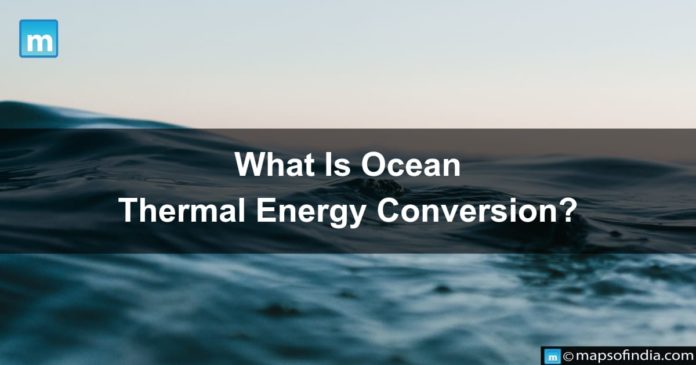Ocean Thermal Energy Conversion, often abbreviated as OTEC, is a clean and sustainable energy technology that utilizes the temperature difference between the warm surface waters of the ocean and the colder depths to generate electricity. The concept of OTEC is rooted in the principle that the ocean’s surface layers absorb solar radiation, warming the water while the deeper layers remain cold. This temperature gradient serves as the driving force for OTEC systems.
OTEC Systems
There are three main types of OTEC systems, each designed to harness ocean thermal energy in different ways:
-
Closed-Cycle OTEC (CCOTEC)
In a closed-cycle OTEC system, a working fluid with a low boiling point, such as ammonia, transfers heat from warm surface water to a low-pressure chamber. Because of heat absorption, the working fluid vaporizes and drives a turbine connected to a generator, producing electricity. The vaporized fluid is then condensed with cold deep-sea water, and the cycle begins again.
-
Open-Cycle OTEC (OCOTEC)
Warm surface seawater is used directly as the working fluid in open-cycle OTEC systems. Warm seawater is pumped into a low-pressure chamber and vaporized to produce steam. The steam powers a turbine, which is linked to a generator and generates electricity. The steam is condensed using cold deep-sea water after passing through the turbine, and the resulting liquid is returned to the ocean.
-
Hybrid OTEC Systems
Hybrid OTEC systems combine closed-cycle and open-cycle design elements. These systems seek to maximize efficiency by combining elements from each approach, allowing for better adaptation to changing environmental conditions.
Advantages of OTEC
-
Renewable and Constant Energy Source
Unlike other renewable energy sources, OTEC provides a consistent and reliable energy supply because the temperature gradient in the ocean remains constant throughout the day and night.
-
Zero Greenhouse Gas Emissions
OTEC generates electricity without emitting greenhouse gases, making it a greener alternative to fossil fuels.
-
Utilization of Untapped Ocean Resources
Oceans cover roughly 70% of the Earth’s surface, and OTEC enables us to access this vast and underutilized thermal energy source.
-
Potential for Desalination
OTEC systems have the potential to aid desalination processes by supplying freshwater as well as clean electricity.
Challenges and Considerations
While OTEC holds great promise, several challenges and considerations must be addressed to make it a widely adopted and economically viable energy solution.
-
High Capital Costs
The initial investment required to build OTEC infrastructure, including pipelines and platforms, can be significant.
-
Geographical Limitations
OTEC is most effective in tropical regions where the temperature difference between surface and deep-sea waters is significant. This limits its applicability to specific geographic areas.
-
Environmental Impact
The installation and operation of OTEC systems may have localized environmental consequences, such as changes in marine ecosystems and disruption to marine life.
-
Technical Challenges
OTEC systems necessitate robust engineering solutions to address technical challenges such as corrosion, biofouling, and material durability in harsh marine environments.
Conclusion
Ocean Thermal Energy Conversion is an intriguing frontier for sustainable energy. As the world grapples with the urgent need to transition away from fossil fuels, innovative technologies such as OTEC provide a glimpse into a future in which clean, renewable energy is harvested from the depths of our oceans.




